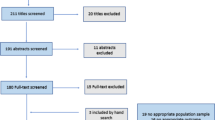Abstract
The effects of a poreforming protein from Pseudomonas aeruginosa on the rabbit cornea were tested in vivo by measuring intraepithelial carboxyfluorescein accumulation. Carboxyfluorescein diacetate and subsequently the P. aeruginosa cytotoxin were applied by means of contact lenses with a spherical cavity on the concave surface. This allowed the application of defined concentrations of carboxyfluorescein diacetate and cytotoxin on a defined area of the corneal epithelium. Starting at 0.5 μM, cytotoxin increased the epithelial cell membrane permeability for the intracellular carboxyfluorescein within 1 min. At higher concentrations cells were shed from the epithelium. Corresponding morphological changes of the cellular structure of the corneal epithelium were observed and documented by fluorescence photomicrography. The healing process of toxified corneal epithelium appeared to be complete within 3 days. The data presented here indicate the possible role of cytotoxin-induced changes in epithelial permeability in P. aeruginosa infections. In this context, the role of soft contact lenses as a possible cytotoxin reservoir is discussed.
Similar content being viewed by others
References
Bach KHP (1991) Mikrointerferometrische Bestimmung der Porenvolumenverteilung von Cornea und Kontaktlinsen und ihre fraktale Interpretation. Thesis, University of Giessen
Bonanno JA, Polse KA (1987) Corneal acidosis during contact lens wear: effects of hypoxia and CO2. Invest Ophthalmol Vis Sci 28:1514–1520
Crowell KM, Lutz F (1989) Pseudomonas aeruginosa cytotoxin: The influence of sphingomyelin on binding and cation permeability increase in mammalian erythrocytes. Toxicon 27:531–540
Donnenfeld ED, Cohen EJ, Arentsen JJ, Genvert GI, Laibson PR (1986) Changing trends in contact lens associated corneal ulcers: an overview. CLAO J 12:145–149
Donzis PB, Mondino BJ, Weissman BA, Bruckner DA (1987) Microbial contamination of contact lens care systems. Am J Ophthalmol 104:325–333
Graber ML, DiLillo DC, Friedman BL, Pastoriza-Munoz E (1986) Characteristics of fluoroprobes for measuring intracellular pH. Anal Biochem 156:202–212
Grimes PA, Stone RA, Laties AM, Li W (1982) Carboxyfluorescein. A probe of the blood-ocular barriers with lower membrane permeability than fluorescein. Arch Ophthalmol 100:635–639
Hazlett LD, Berk RS, Iglewski BH (1981) Microscopic characterization of ocular damage produced by Pseudomonas aeruginosa toxin A. Infect Immunol 34:1025–1035
Holden BA, Roiss R, Jenkins J (1987) Hydrogel contact lenses impede carbon dioxide efflux from the human cornea. Curr Eye Res 6:1283–1290
Hyndiuk RA (1982) Experimental Pseudomonas keratitis. Trans Am Ophthalmol Soc 79:541–624
Hyndiuk RA, Snyder RW (1987) Bacterial keratitis. In: Smolin G, Thoft RA (eds) The cornea. Scientific foundations and clinical practice. Little & Brown, Boston, pp 193–224
Klotz SA, Misra RP, Butrus SI (1990) Contact lens wear enhances adherence of Pseudomonas aeruginosa and binding of lectins to the cornea. Cornea 9:266–270
Kreger AS, Gray LID (1978) Purification of Pseudomonas aeruginosa proteases and microscopical characterization of pseudomonal protease-induced rabbit corneal damage. Infect Immunol 19:630–648
Lawin-Brussel CA, Refojo MF, Leong F-L, Kenyon FK (1991) Pseudomonas attachment to low-water and high-water, ionic and nonionic, new and rabbit-worn soft contact lenses. Invest Ophthalmol Vis Sci 32:657–662
Lutz F (1979) Purification of a cytotoxic protein from Pseudomonas aeruginosa. Toxicon 17:467–475
Lutz F (1986) Interaction of Pseudomonas aeruginosa cytotoxin with plasma membranes from Ehrlich ascites tumor cells. Naunyn-Schmiedebergs Arch Pharmacol 332:103–110
Lutz F, Maurer M, Failing K (1987) Cytotoxic protein from Pseudomonas aeruginosa: formation of hydrophilic pores in Ehrlich ascites tumor cells and effect on cell viability. Toxicon 25:293–305
Lutz F, Alberti U, Leidolf R, Weiss R (1989) Enzyme-linked immunosorbent fluorescence assay for quantitating the cytotoxin production by clinical Pseudomonas aeruginosa isolates. Naunyn-Schmiedebergs Arch Pharmacol 339:R19
Rosenfeld SI, Mandelbaum S, Corrent GF, Pflugfelder SC, Culbertson WW (1990) Granular epithelial keratopathy as an unusual manifestation of Pseudomonas keratitis associated with extended-wear soft contact lenses. Am J Ophthalmol 109:17–22
Sernetz M (1973) Microfluorometric investigations on the intracellular turnover of fluorogenic substrates. In: Thaer A, Sernetz M (ed) Fluorescence techniques in cell biology. Springer, Berlin Heidelberg New York, pp 243–254
Sernetz M, Thaer A (1972) Microfluorometric binding studies of fluorescein-albumin conjugates and determination of fluorescein-protein conjugates in single fibroblasts. Anal Biochem 50:98–109
Sernetz M, Bittner HR, Willems H, Baumhoer C (1989) Chromatography. In: Avnir D (ed) The fractal approach to heterogeneous chemistry. Wiley, Chichester, pp 361–379
Thaer AA, Geyer C (1985) Mikroskopische Untersuchung des Korneaepithels auf der Grundlage des intracellulären Umsatzes fluorogener Substrate. Klin Monatsbl Augenheilkd 187:43–48
Thaer AA, Geyer OC, Kaszli FA (1990) Fluorogenic substrate techniques as applied to the non-invasive diagnosis of the living rabbit and human cornea. In: Masters BR (ed) Noninvasive diagnostic techniques in ophthalmology. Springer, Berlin Heidelberg New York, pp 569–590
Author information
Authors and Affiliations
Rights and permissions
About this article
Cite this article
Lutz, F., Kaszli, F.A., Bach, P. et al. Changes in rabbit corneal epithelial membrane permeability caused by locally applied Pseudomonas aeruginosa cytotoxin: a microfluorometric examination in vivo. Graefe's Arch Clin Exp Ophthalmol 232, 373–378 (1994). https://doi.org/10.1007/BF00175990
Received:
Revised:
Accepted:
Issue Date:
DOI: https://doi.org/10.1007/BF00175990




